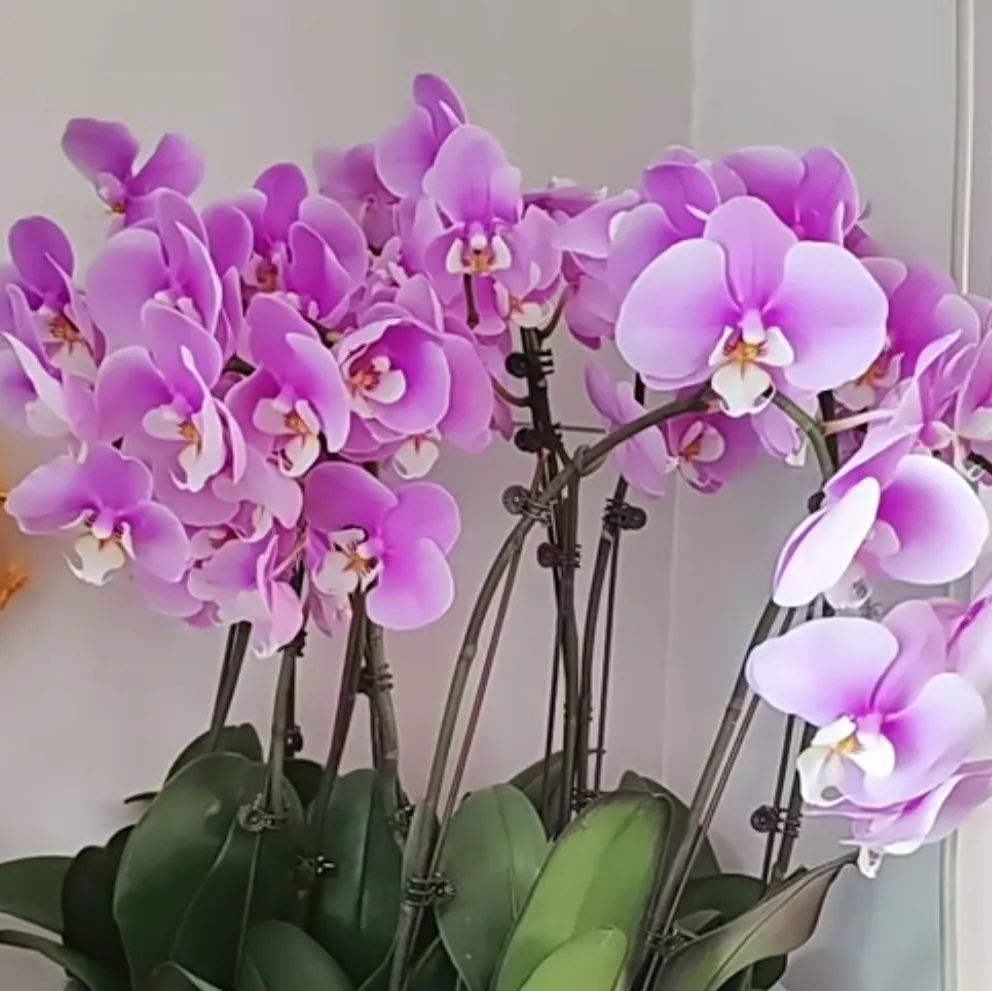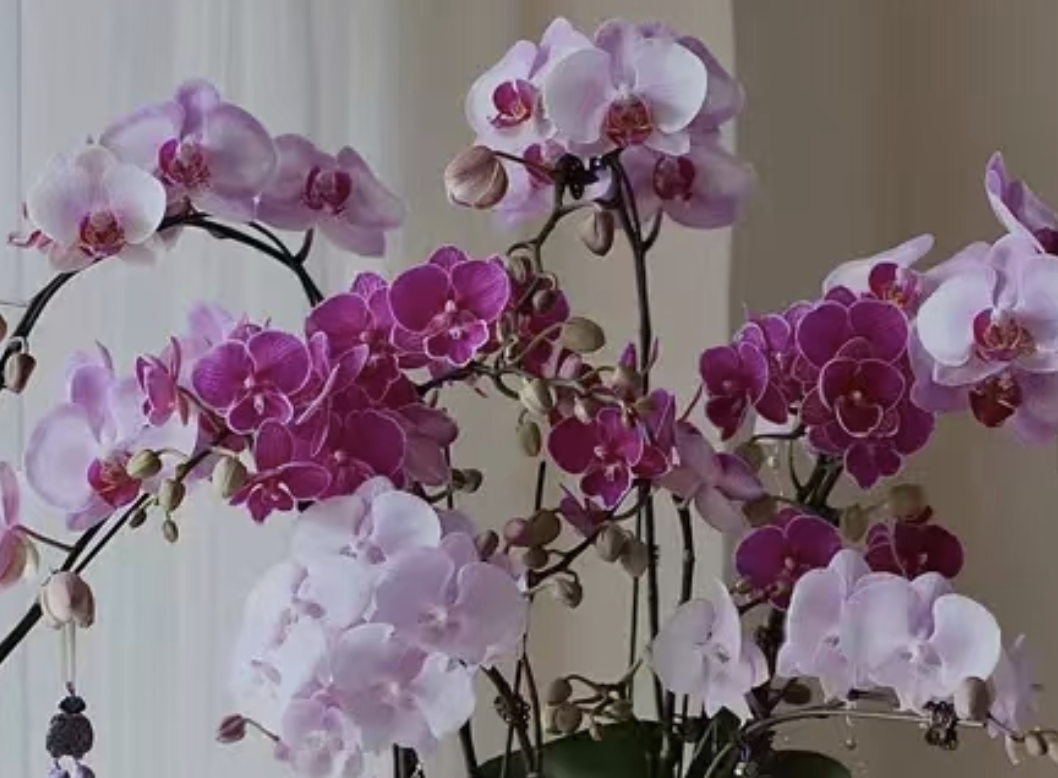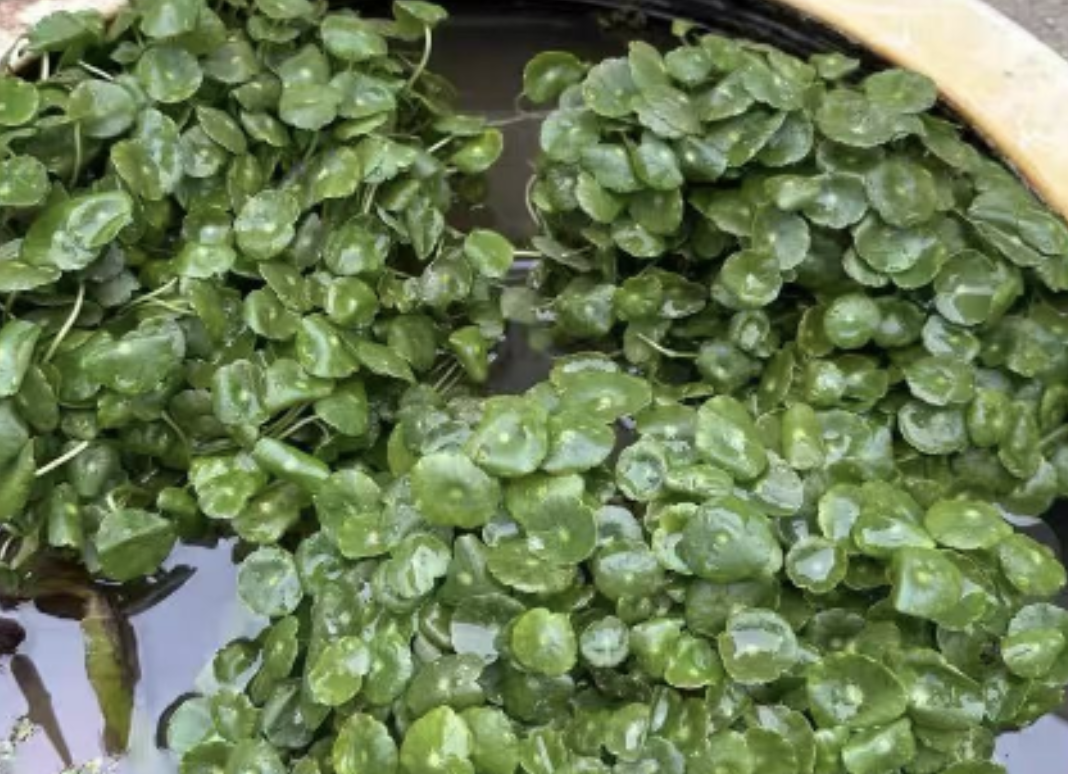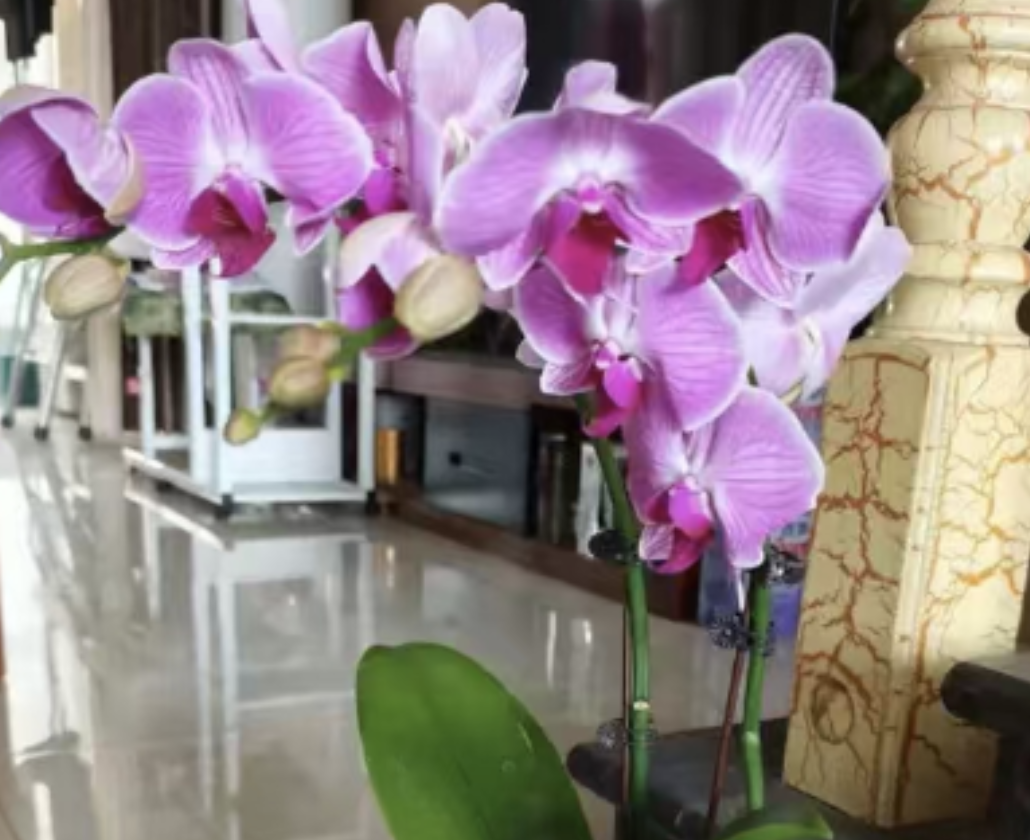Phalaenopsis Anna is a very popular variety of Phalaenopsis.
The flowers of Phalaenopsis Anna are huge, with broad petals and thick texture, fully showing a magnificent and grand posture. The deep purple or fuchsia flower color is extremely gorgeous, with rich colors and a sense of layering. It stands out among many Phalaenopsis and is particularly eye-catching. The broad and lustrous leaves not only provide good support for the plant but also can store sufficient nutrients.
Phalaenopsis Anna has a relatively long flowering period, which can last for several months in a suitable environment. As long as it is carefully maintained, it can continuously bloom beautifully and add a bright color to the home or office environment.
In terms of maintenance and management of Phalaenopsis Anna, the following points should be noted:
Watering: Phalaenopsis Anna has relatively special requirements for water. It likes a humid environment but must not have water accumulation. When watering, it is necessary to master the amount and frequency. You can judge whether watering is needed by observing the dryness and wetness of the substrate surface.
Light: Phalaenopsis Anna needs sufficient and soft light. A bright, scattered light place is its ideal growth location, such as near a window but not directly exposed to sunlight. Direct sunlight will burn the leaves and flowers and affect the beauty and health of the plant.
Temperature: The suitable growth temperature is between 18°C and 28°C. This temperature range can keep Phalaenopsis Anna in a good growth state. In winter, be sure to pay attention to keeping warm. You can move the plant to a warm indoor place or take some insulation measures, such as using an insulation cover, to prevent the plant from growing slowly or even stopping growing due to too low temperature, and the flowers may also wither.
Fertilization: During the growth period, Phalaenopsis Anna needs an appropriate amount of nutrients to maintain growth and flowering. You can apply a thin liquid fertilizer appropriately, but never over-fertilize. Excessive fertilization will burn the roots and cause serious damage to the plant. You can dilute it according to the ratio on the fertilizer instruction manual and then fertilize regularly. Generally, fertilize once every one to two weeks.
Repotting: When the plant of Phalaenopsis Anna grows to a certain extent, it needs to be repotted in time. Choose a flowerpot of an appropriate size and make sure that the flowerpot has enough space for the root system to grow. At the same time, use a loose and breathable substrate, such as special soil for orchids, bark, sphagnum moss, etc., which is conducive to the breathing and growth and development of the root system. During the repotting process, operate carefully to avoid damaging the root system.
The characteristics of Phalaenopsis Anna are as follows

Share with
Tagged in :




Leave a Reply